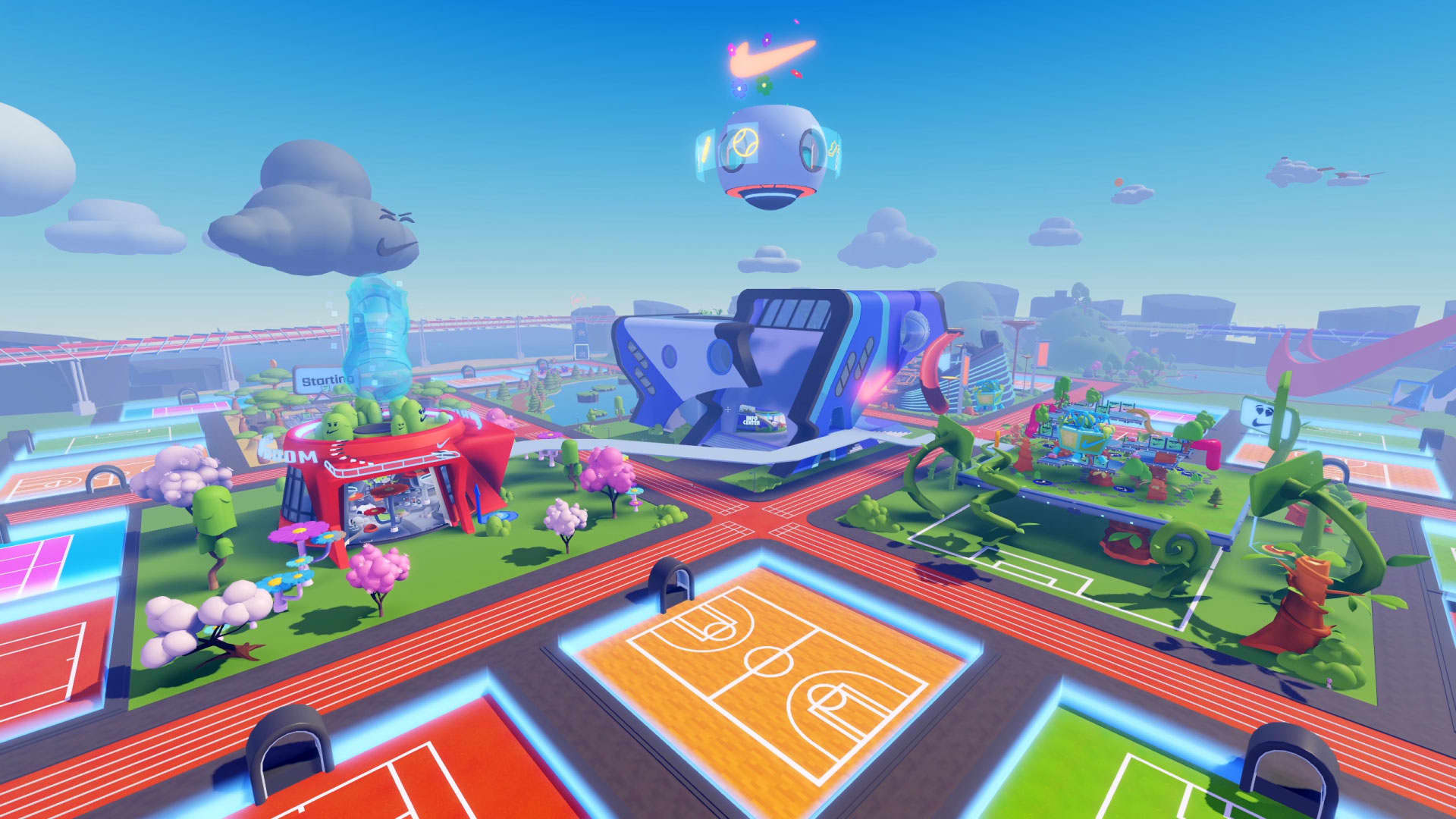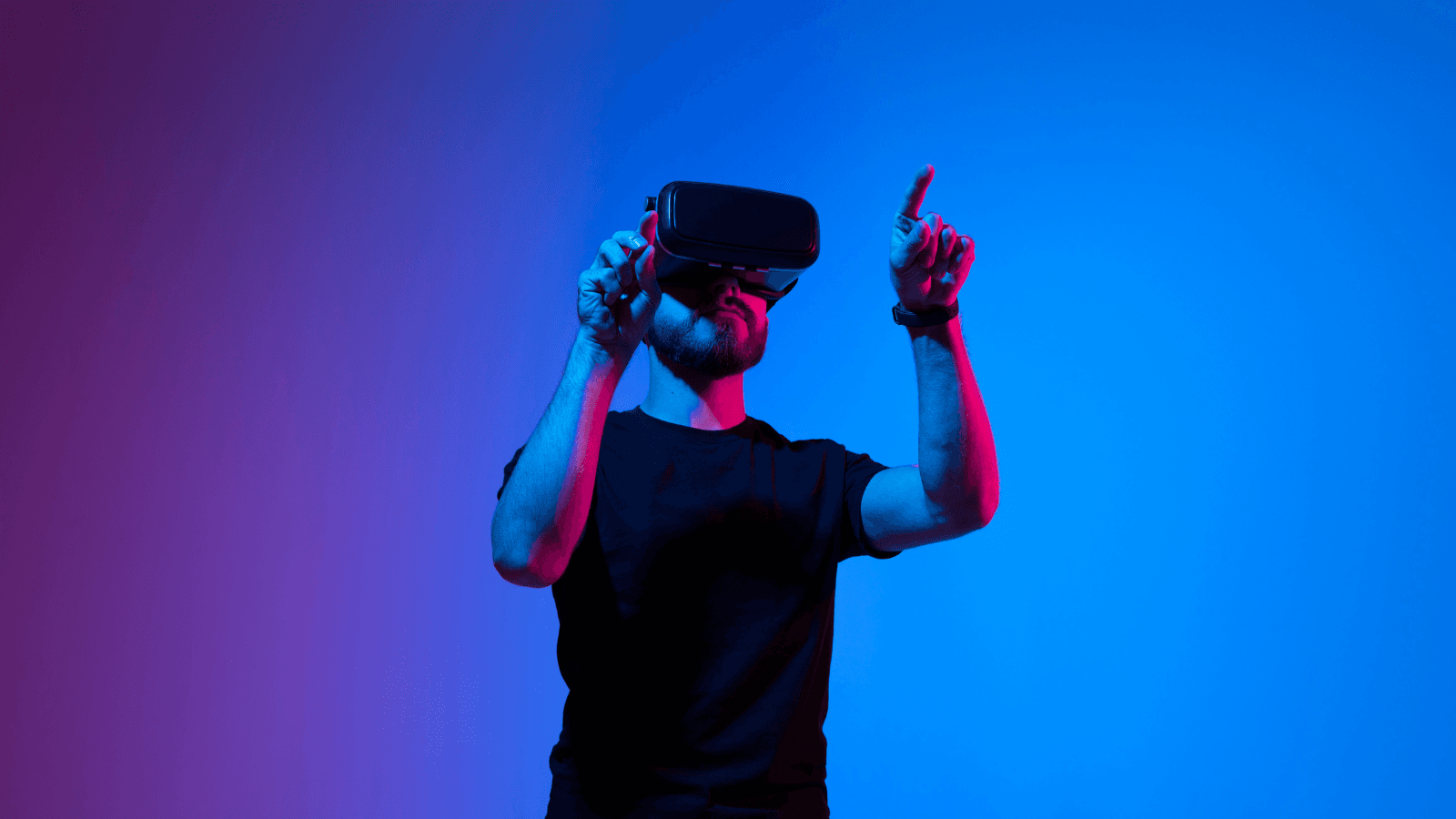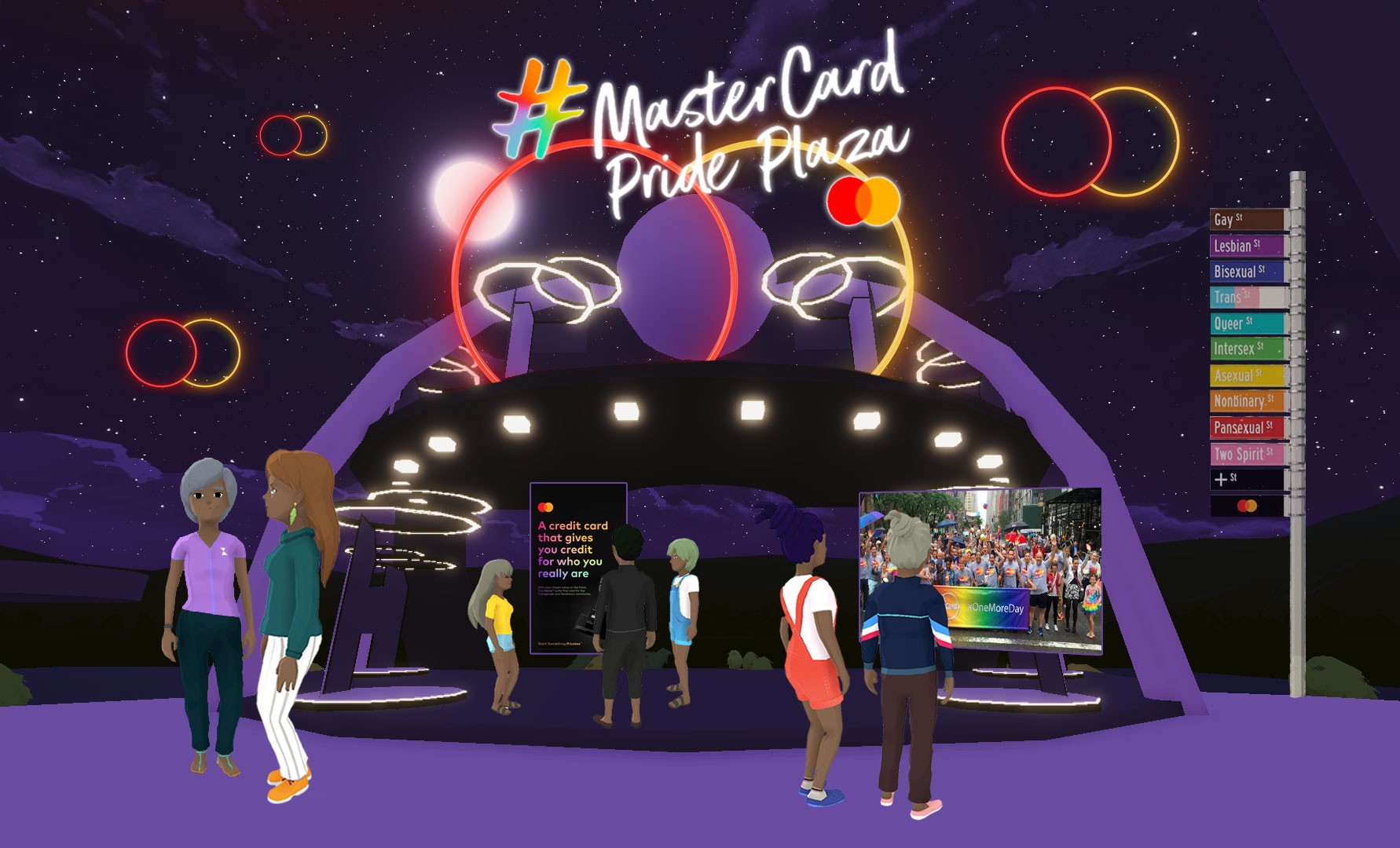Back to Blog
Measuring Success in the New Age of Virtual Marketing
Oct 10, 2023
Callum Moates
The dawn of the digital age brought many opportunities for businesses to connect with their audience. From the early days of the internet to the rise of social media platforms, marketing has continually evolved to adapt to the changing digital landscape. Now, we stand on the brink of another monumental shift: the emergence of the metaverse, or as we like to call it, the 3D internet.
Virtual marketing, in the context of the metaverse, goes beyond traditional digital ads and social media campaigns. It delves into creating immersive brand experiences, virtual storefronts, and interactive events that engage users in a three-dimensional digital space. Possibilities include attending a virtual concert sponsored by a brand, trying out virtual fashion items before purchasing or interacting with virtual brand ambassadors. These are not speculations; they are becoming a reality.
Businesses that quickly adapt to this new realm are reaping the benefits. Virtual marketing allows for more personalized and engaging consumer interactions, increasing brand loyalty and conversion rates. Moreover, the 3D internet provides a global platform, breaking geographical barriers and opening up business opportunities to reach a wider audience.
The rise of virtual marketing
At its core, marketing has always been about connecting with audiences in meaningful ways. Traditional marketing, which encompasses print ads, television commercials, and radio spots, relies on broadcasting a message to a broad audience. It's often a one-way communication channel where brands push their message out, hoping it resonates with potential customers.
Virtual marketing, on the other hand, leverages digital platforms to create interactive, immersive, and personalized experiences for users. It's not just about broadcasting a message; it's about creating a two-way dialogue where consumers can engage with brands in real-time, often in personalized and dynamic ways.
A new marketing frontier
The metaverse, a collective virtual shared space where users have individual agency, is becoming an attractive channel for connecting with customers and building relationships. Think of it as a vast, immersive digital universe where users can interact with each other and their surroundings in real-time. This universe is always active and evolving and encourages user-generated content (UGC). Brands are quickly recognizing the potential of the 3D internet as a game-changing platform for marketing campaigns and brand engagement.
For instance, Nike has made significant strides in the metaverse with the launch of ‘Nikeland’ on Roblox, attracting 7 million visitors since its conception in 2021. Here, fans can engage with brand experiences, participate in promotions, and purchase exclusive digital products. Additionally, Nike has ventured into non-fungible tokens (NFTs), notably by acquiring RTFKT Studios, which sold 600 pairs of NFT sneakers in minutes. With its interactive capabilities, the metaverse allows brands like Nike to transform passive viewers into active participants, redefining the future of product marketing.
The metaverse offers opportunities for brands to engage with their audience, some of which include:
Personalized interactions: With the help of artificial intelligence (AI) and data analytics, brands can offer tailored experiences to users based on their preferences and behaviors in the metaverse. Advanced AI algorithms analyze user behavior, preferences, and past interactions within the 3D internet. This data is then processed to generate personalized content, product recommendations, and interactive experiences tailored to each user. For instance, the ‘Fiat Metaverse Store’ allows customers to experience its new 500 La Prima by Bocelli model, where customers can explore features offered and personalize the car’s setup.
Reach new demographics and audiences: The metaverse provides a platform for brands to connect in new ways with younger audiences, primarily Millenials and Gen Z, and keep them informed about their products and technologies. For instance, Vans utilized the 3D internet to build brand awareness among their core demographic of 13 to 35-year-olds. Their online skatepark allowed users to play games, earn points, and redeem them for virtual products, attracting over 48 million visitors.
Creating immersive and interactive experiences: Apart from real-world activations, brands are leveraging the metaverse to offer unique interactive experiences through games, events, virtual shops, and sponsorships. For instance, McDonald’s recently launched McNuggets Land in The Sandbox, where players can engage with games and complete quests in an immersive world designed with decor mimicking dipping sauces and filled with nugget characters. Players can earn rewards like branded digital assets and crypto tokens. Such activations create a unique and memorable experience for customers.
Building customer loyalty: Gamification in the metaverse is not just about games but about building loyalty and incentivizing behaviors. Flipkart, a major e-commerce platform, partnered with Polygon Labs and Hang to create a gamified loyalty program called ‘Fire Drops’ that leverages non-fungible tokens (NFTs). This program integrates games and quests for various brands, enabling customers to earn discounts and special memberships.

Source: CNBC
Key metrics for virtual marketing success
Measuring marketing success and return on investment (ROI) of campaigns and activations in the metaverse requires a brand to look beyond traditional metrics and focus on aspects like user dwell time, engagement, and brand perception. Once a brand identifies what matters most to success, it must work backward to build an experience emphasizing those elements.
Here are a few metrics that brands can use to measure success in the metaverse:
Virtual footfall: Just as physical activations measure foot traffic, in the 3D internet, it's essential to track the number of avatars or users visiting your virtual space, be it a storefront, event, or any branded environment. For instance, ABSOLUT created a ‘Wild Berri Dance Battle’ in the metaverse, measuring success through the number of unique visitors to their activation.
Engagement: Engagement in the metaverse is one of the primary metrics to keep tabs on. Brands can measure it by combining data regarding time spent and the number of interactions within a metaverse space, which can help identify ways to increase customer experience.
Dwell time: This metric indicates the average time visitors spend in your virtual environment, event, or activation and perform specific tasks, reflecting user engagement and interest. Creative agency Cult LDN launched ‘Metaverse Beauty Week in 2023’ and measured the beauty experience’s success through dwell time, which was 150% higher than beauty brand sites.
Retention: This metric tracks users who revisit your metaverse activation and ascertains how often users come back every day/week/month, indicating a positive user experience and relevance of content.
Brand perception: The 3D internet is also a powerful platform for building a ‘brand image,’ a metric companies must closely track. Utilize decentralized forums, chat groups, or metaverse gatherings to gather feedback. Analyzing the sentiment of these discussions can provide a pulse on your brand's perception.
Conversion rate: The conversion rate tracks how many visitors take a desired action, such as purchases of virtual wearables, sign-ups to newsletters, or loyalty programs. For instance, virtual events in the metaverse, such as the one hosted by Snoop Dogg in collaboration with The Sandbox, utilized NFT party passes for entry. Here, the sale of the NFT passes can be considered to estimate a conversion rate.

Virtual marketing analytics tools
Understanding user behavior and engagement is paramount in the metaverse and virtual marketing age. Various analytics tools have been developed to cater to this need, providing real-time data and insights that help brands optimize their virtual marketing efforts.
DCL Metrics: DCL Metrics is an analytics tool for Decentraland. As businesses carve out their niche in Decentraland, gauging user engagement is crucial. DCL Metrics offers a suite of features to address this. Every time a user visits a virtual space or activation, it analyzes traffic, session duration, and the performance of virtual assets like NFTs to refine the virtual experience continuously. By harnessing the capabilities of DCL Metrics, brands can derive valuable insights about their metaverse activation ROI, fine-tune their virtual presence based on genuine user interactions, and strategically plan their future metaverse endeavors.
Rendezverse Analytics Tools: Rendezverse is a platform that allows companies and brands to build 3D virtual experiences and provides analytics tools to track engagement, user interactions, number of visits, visitor demographics, user feedback, and sentiment to help optimize 3D experiences.
Landvault Monetize: Landvault Monetize is a no-code SDK designed to grow, measure, and monetize 3D worlds. As part of the Monetize SDK, we have our Measurements & Insights Tool. This analytics software offers detailed data that helps brands understand their 3D world, including measuring acquisition, retention, and engagement to derive actionable insights.

Landvault's Measurements & Insights Tool
Case studies: Successful metaverse marketing campaigns
Heineken Silvery Brewery: Embracing the 3D internet, Heineken built a virtual brewery, providing an immersive experience for its community. This initiative was part of their marketing strategy to introduce Heineken Silver to Gen Z. Collaborating with Landvault, Heineken chose Decentraland as the platform for their Virtual Bar, ensuring a mature visual experience. The virtual brewery featured a DJ, dancing, and virtual beer, emphasizing Heineken's innovative spirit. This campaign garnered significant media attention and won 4 Silver Lions for digital craft and brand experience and activation at the Cannes Festival of Creativity.
Mastercard Pride Plaza: Mastercard, in collaboration with VIA, Carat, and Landvault, brought pride to the metaverse with their 'Your True Self is Priceless' campaign in the metaverse. Celebrating the LGBTQIA+ community, the campaign was anchored around the sponsorship of New York City Pride. The 3D internet experience, hosted in Decentraland, included a community center, dance floor, and live events. The activation also featured digital wearables that could be redeemed and were designed in collaboration with influencers and creators such as Shanée Benjamin, Rahemur Rahman, and Laurel Charleston. This initiative emphasized Mastercard's commitment to inclusivity and authenticity, achieving over 100,000 minutes spent in the experience.
Coca-Cola: Recognizing the potential of the 3D internet to connect with the tech-savvy youth, Coca-Cola launched its inaugural NFT campaign in July 2021. Partnering with 3D digital design studio Tafi, the campaign featured 'loot boxes' containing unique digital assets. These included a branded puffer jacket wearable NFT, a ‘sound visualizer NFT’ capturing the essence of sharing a Coca-Cola, and a ‘friendship card NFT’ reviving the brand's iconic 1940s trading cards. This blend of utility and nostalgia positioned Coca-Cola as a pioneer in the metaverse marketing space.

Mastercard Pride Plaza in Decentraland
Conclusion
The evolution of marketing in the digital age has brought us to the brink of a new era: the metaverse, a 3D internet. Virtual marketing in this new space offers immersive brand experiences, personalized interactions, and global reach. Successful brands like Nike, Vans, McDonald's, and Flipkart have embraced the 3D internet, creating unique and interactive consumer experiences. Measuring success in the metaverse requires marketers to refocus on metrics that matter most in the digital world, like virtual footfall, dwell time, retention, brand perception, conversion rate, and engagement. Analytics tools provided by Landvault Monetize, DCL Metrics, and Rendezverse help brands optimize their virtual marketing efforts. As digital marketing evolves in the metaverse, it is the ideal time for brands to test and learn, experimenting with new ideas within the 3D internet to quickly transition from failure to capitalizing on successful opportunities.
Are you looking to launch an immersive marketing campaign for your brand or company? We can help you create unforgettable experiences by developing, scaling, and monetizing your idea in the metaverse. Get in touch with us!
Oct 10, 2023
Callum Moates
Subscribe to our monthly newsletter
About Landvault
Landvault is building infrastructure to accelerate the metaverse economy, by building tools to create, deploy and monetize content. The company has helped over 200 clients enter the metaverse, including both Fortune 500 companies and government organizations like the Abu Dhabi government, Mastercard, L’Oreal, Red Bull, and Heineken. The company has raised a total of $40m over the past three years and continues to pioneer technological advancements.
